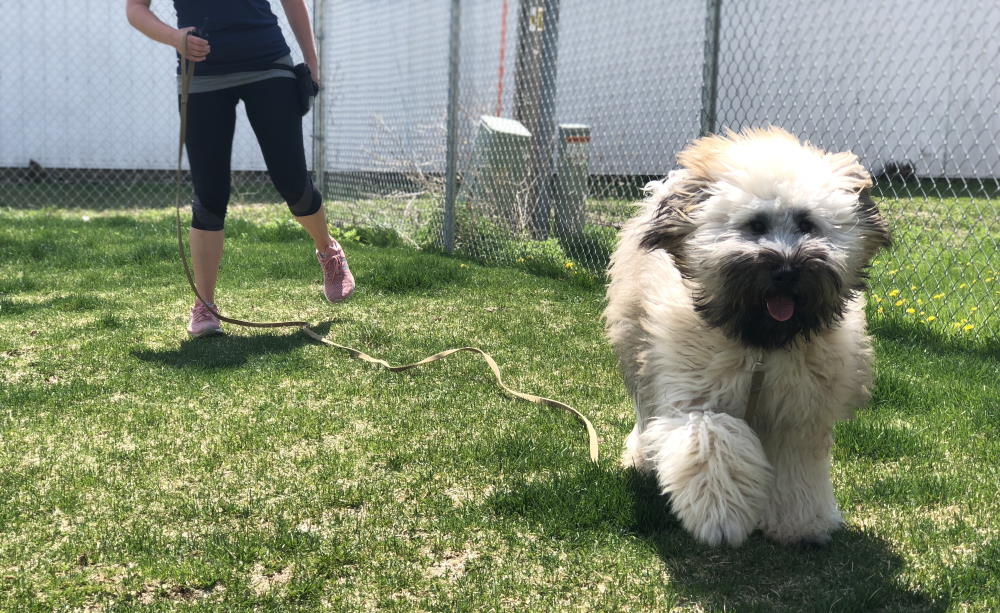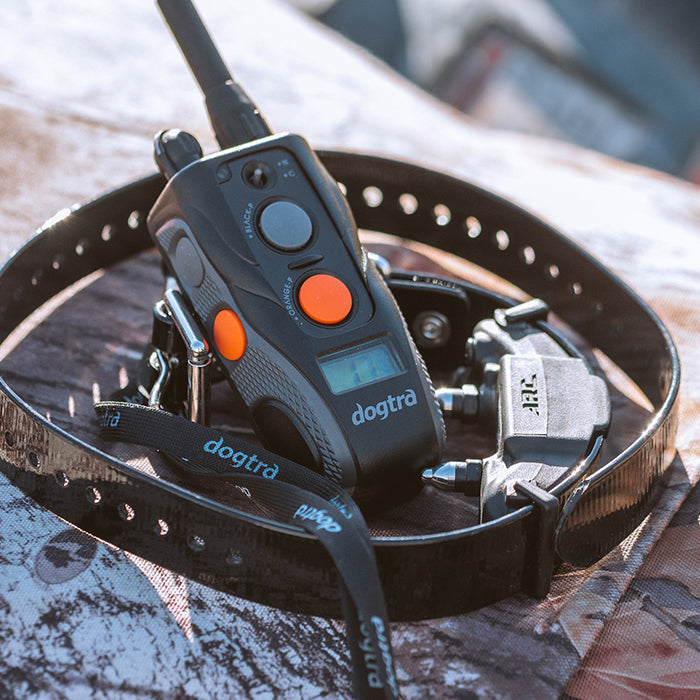HOW TO TRANSITION TO OFF-LEASH TRAINING WITH E-COLLAR

Spend a bit of time reviewing videos or protocols about e-collar training, and you’ll find many representations of dogs training on a leash or long line.
This can cause some confusion since we know that e-collars are the preferred tool for off-leash control. I know over the years I’ve fielded more than a few remarks such as; “but I thought that e-collars were for off-leash training; how come the dog has a line attached to them?”
Why You Should Start With On-Leash E-collar Training
If you’re searching for a way to improve your dog’s reliability off-leash, the last thing you want to see or do is more on-leash training. But let me explain the reason why it is so crucial to your long-term success.
Without the leash, you have No Way to ensure that your dog responds correctly when they first feel the sensation of e-collar stimulation. And if you can’t ensure a correct response, you run the risk that any number of inappropriate responses could take place
Quite simply, the leash serves as a translator, communicating the gap between the known leash pressure cues and the newly introduced e-collar stimulation cue. Having a line attached to the dog’s regular collar allows you to guide and help him to do as you ask. Without guidance, your dog might pause and look around, freeze up, scratch, or startle when he first feels the sensation. And, those are not the responses you’re training for
Just in case you’re saying to yourself, “But my dog should know what he’s supposed to do. I’m using his commands to tell him,” remember that this is the first time your dog is experiencing this new sensation. He doesn’t know what it is, where it’s coming from, or what he should do about it. It is an odd feeling and can be distracting. Plus, most dogs really aren’t that tuned in to words and verbal cues nearly as much as they are to physical ones. 
It is absolutely necessary that you do this introductory e-collar training on-leash so you can properly prepare the dog to work off-leash later. This on-leash training phase is referred to as collar conditioning.
How to Transition from On-Leash to Off-Leash E-Collar Training
Trying to collar condition without the use of a leash is akin to teaching a toddler to ride a bike without the assistance of training wheels first. It might be possible, but it certainly isn’t going to happen as easily.
Here are three training tips to help your dog go from working on-leash to off-leash. I’ll use the example of teaching a recall for the sake of clarity.
1. Use the leash/long-line to assist the dog in the desired behavior.
As you apply stimulation and tell your dog to come to you, apply tension to the line (walking backward is the easiest way to do this) so that the dog is motivated to move toward you. As soon as the dog is moving in your direction, stop the stimulation and reward your dog for coming to you.
The long-line is guiding the dog to turn and move towards you. The guidance ensures that your dog does the right thing. He doesn’t have to “guess” how to make the new, strange sensation go away. The leash guidance prevents the dog from laying down, scratching at the collar, or darting off in the wrong direction.
Practice in a number of locations, with a variety of distractions present. You will notice your dog becoming more confident in how to respond. This clarity will be demonstrated by the dog turning and moving in your direction BEFORE you apply tension to the long line. As the dog gets better, lessen any tension on the line and only use it as needed.
2. Drop the long-line and let the dog drag it during practice sessions.
Now you are in an intermediate phase of the training. Continue practicing recalls around different distractions and remember to reward your dog every time he comes to you. If the dog is ignoring you due to being distracted, turn up your level a bit and repeat your tap/command sequence. Pick up the long line and use it as needed if your dog shows any sign of confusion or uncertainty about how to respond to the stimulation.
3. Begin practicing off-leash.
If you haven’t had to pick up the long-line to help your dog comply for several sessions and you’ve generalized the training by working in different areas, you can unclip the line and begin to practice without it. Practice your off-leash work in fenced and enclosed areas first. It will help overcome any hesitation or nervousness you might have about trusting the dog to respond correctly.
Final Thoughts on Off-Leash E-Collar Training
Mastering off-leash training with e-collar is a challenging process that requires a significant amount of time and dedication. However, the reward of being able to bring your furry companion on off-leash adventures, such as hiking trips or trips to the beach, is well worth the effort. With persistent practice and determination, you and your beloved pet can surely achieve this goal together.
Have fun training and enjoy the newfound freedom together!
NOTE: Regardless of how well-trained your dog is, always practice responsible dog ownership. Please use a leash in public areas that require it. It helps others around you feel more at ease and ensures your dog is safe in high-use areas.




